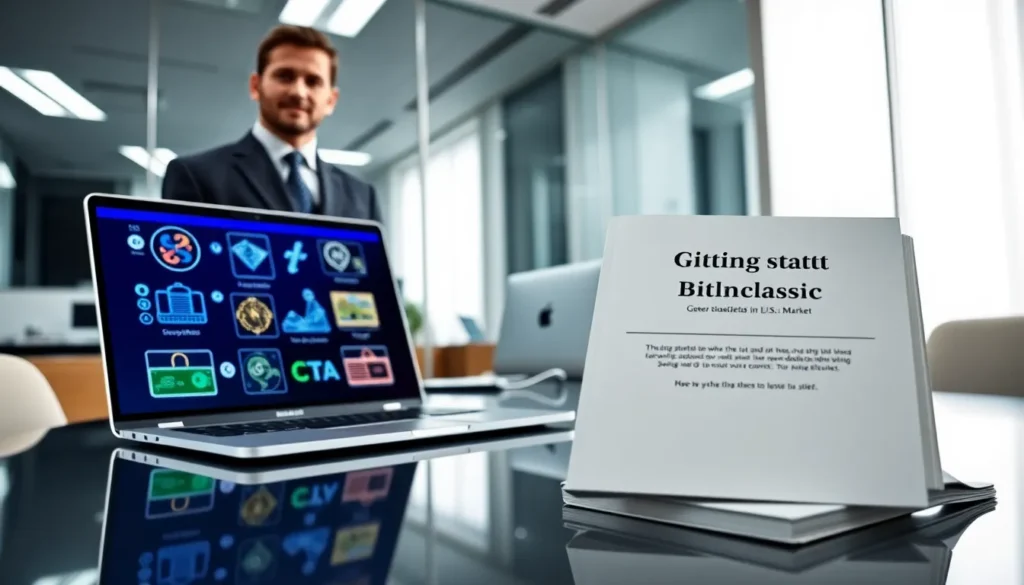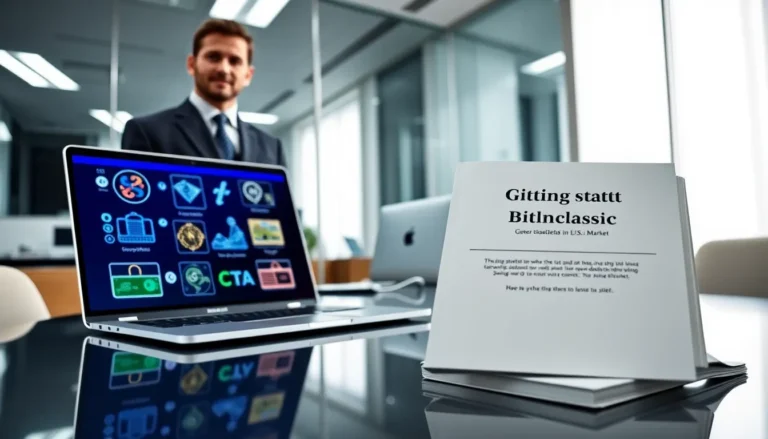Table of Contents
ToggleIn a world where digital currencies are becoming as common as coffee runs, understanding altcoin wallets is crucial. Have you ever thought of your wallet as a donut? Sure, it holds tasty treasures, but only if it’s the right kind. If you’re looking to navigate the world of altcoins and find that perfect ebook on Bitclassic, buckle up. This article is your guide, packed with insights that could turn your crypto journey into a delightful adventure. Let’s dig in.
What Are Altcoin Wallets?

Altcoin wallets are digital storage spaces designed specifically for altcoins, which are any cryptocurrencies that aren’t Bitcoin. Think of them as treasure chests for your digital assets. While Bitcoin gets most of the spotlight, there are thousands of altcoins available, ranging from Ethereum to Ripple, each with unique features and purposes. These wallets help users store, send, and receive altcoins securely, making them essential tools for anyone diving into the crypto market.
In essence, altcoin wallets can be either hot (online) or cold (offline). Hot wallets are convenient for daily transactions due to their internet connectivity, whereas cold wallets offer heightened security by storing assets offline. This distinction is crucial for users to choose the appropriate wallet based on their needs.
Types of Altcoin Wallets
There are several types of altcoin wallets available, each with distinct functionalities:
- Web Wallets: These are online wallets provided by exchanges or third-party services. They are user-friendly and accessible from anywhere, but they come with security risks.
- Mobile Wallets: Applications for smartphones that allow users to manage their altcoins easily. They’re perfect for everyday transactions.
- Desktop Wallets: Software downloaded onto a computer, providing users full control over their private keys while ensuring a higher level of security than web wallets.
- Hardware Wallets: Physical devices that store private keys offline. These wallets are the safest option for holding significant amounts of cryptocurrency, protecting users from hacks.
- Paper Wallets: A more old-school method, where private keys are printed on paper. While this is exceptionally safe against digital theft, it’s essential for the user to keep the paper secure.
How to Acquire Bitclassic Ebooks
Acquiring Bitclassic ebooks is a straightforward process. First, one needs to locate a reputable cryptocurrency exchange that supports Bitclassic. After creating an account and completing the necessary verification, users can purchase Bitclassic using their preferred payment method, be it credit card, bank transfer, or other cryptocurrencies.
Once the Bitclassic is acquired, users can easily transfer it to their altcoin wallet. From there, they can proceed to purchase ebooks. Many platforms accept Bitclassic directly, making the acquisition of digital content seamless and efficient.
Why Choose Bitclassic Over Other Ebooks?
Bitclassic stands out among the myriad of ebook options for several reasons. Firstly, it typically offers a range of titles that align closely with current trends and innovative topics in crypto, finance, and technology.
Also, the convenience of using Bitclassic ensures that purchases are quick and accessible. No more fumbling through payments while trying to download that essential ebook on crypto trading strategies. With Bitclassic transactions, once the purchase is made, users have instant access to their ebooks, making it an appealing choice for those in need of immediate information.
Setting Up Your Altcoin Wallet for Bitclassic
Setting up an altcoin wallet for Bitclassic is easier than brewing a cup of coffee. Begin by choosing a wallet type that meets your needs. After you’ve settled on one, download or create your wallet account. Follow the setup instructions carefully, ensuring you write down your seed phrase or private keys: these are your lifelines.
Once established, you can fund your wallet by transferring Bitclassic from your exchange. Always confirm that you’re sending it to the correct wallet address to avoid mishaps. After a successful transfer, you’ll be ready to use your altcoin wallet to purchase Bitclassic ebooks.
Best Practices for Safeguarding Your Altcoin Wallet
Safety is paramount when managing an altcoin wallet. Here are some best practices to keep in mind:
- Enable Two-Factor Authentication (2FA): This adds an extra layer of security by requiring a secondary verification step.
- Regular Backups: Always back up your wallet. This protects against data loss.
- Choose Strong Passwords: Using a complex password can deter potential hackers.
- Avoid Public Wi-Fi: Conduct transactions over secure, private networks to minimize risks.
- Keep Software Up-to-Date: Regular updates ensure your wallet has the latest security features.







